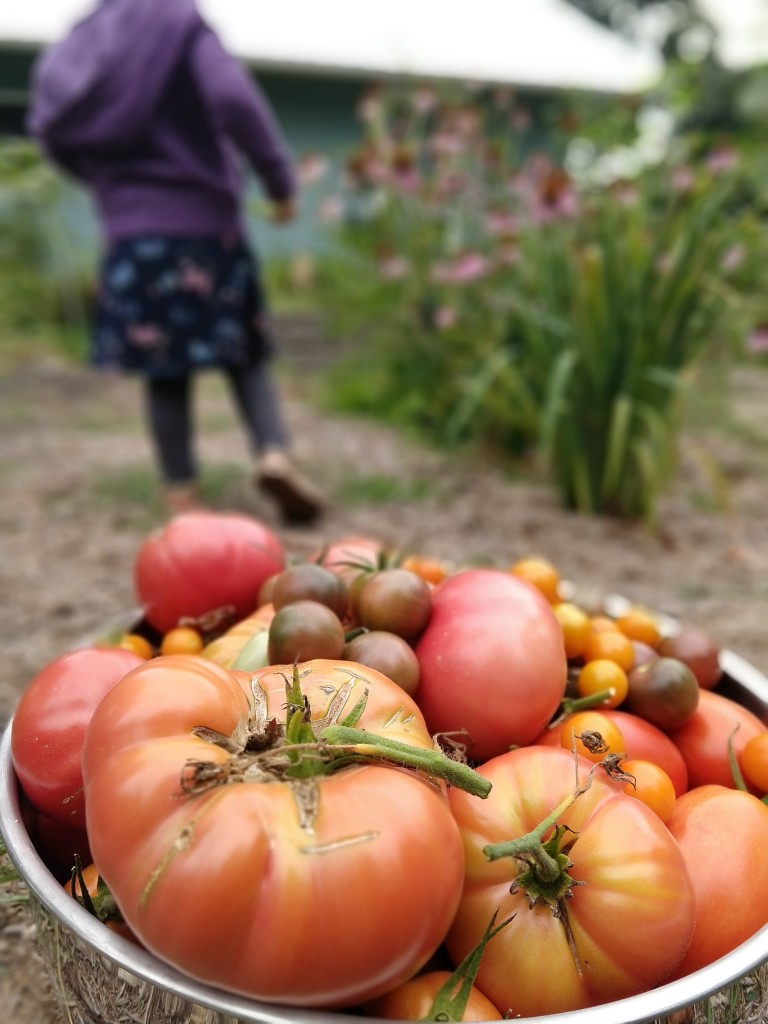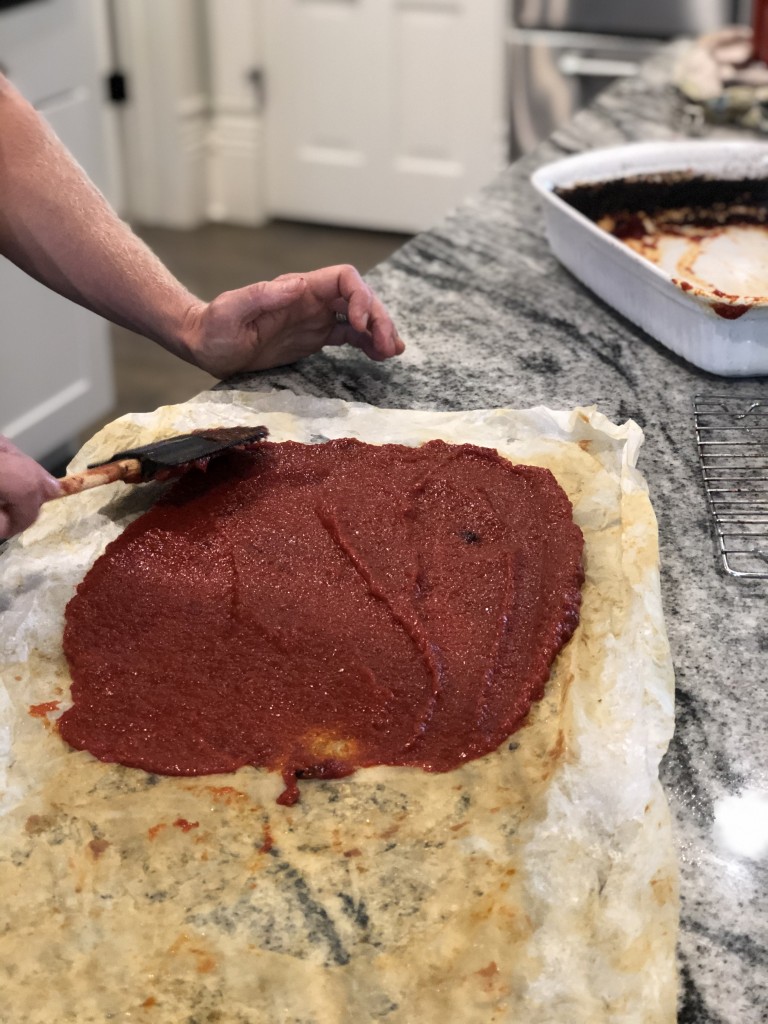This blog is part of a series about preserving food so you can eat local all year long. Here’s blog #3 on preserving tomatoes.
Preserving tomatoes (and then eating them all winter long) is such a favorite activity for our whole family that I’m devoting several blogs to the various ways of preserving them. I’ve collected all of my favorite recipes into a free course, Preserving Local Food. The course includes lessons that explain the basic preservation methods of canning, freezing, and dehydrating, and specific examples of how I use these preserving methods, including recipes for homemade tomato paste, sauce, and sun dried tomatoes!

I’m so excited to share with you this recipe for homemade tomato paste. If you’ve never made your own I have to insist that you seriously consider making it right now. This year. Before buying another single can of tomato paste. It’s truly that good. I can honestly say that I hope I never have to use the commercially made paste again.
The recipe below is for 8 pounds of tomatoes. I usually make just one batch to cover all of our tomato paste needs throughout the year. I recommend freezing it, wrapped in parchment paper, in a gallon plastic bag. I’ll provide full details below; for now it’s enough to know that it freezes in a semisoft state so you can easily break off chunks that approximate the teaspoon or tablespoon on tomato paste called for in most recipes.

I’m shocked at the massive number of recipes that call for tomato paste. This paste works great for all of them, including some of the following (which are favorites in my house):
- These black beans from smitten kitchen that we make nearly once a week in the colder months
- Julia Childs’ Boeuf Bourguignon
- About a gazillion other soup and casserole recipes
Supply List
- Food mill – I’m sorry, but I can’t think of an alternative here, so I recommend borrowing one from a friend/family member, or buying one
- Baking sheet, 9×13 baking pan, or Pyrex dishes
- Common kitchen utensils, such as pots, a wooden spoon, ladle, and paring knife
- Glass jars or plastic bags (depending on your preference)
- Fresh, ripe tomatoes (the recipe below calls for 8 pounds, but the quantity is really up to you)
Step-by Step Instructions
This recipe is adapted only slightly from the Zero Waste Chef
(makes 2 cups)
Ingredients
8 pounds (3.6 kg) red tomatoes, ripe
2 tablespoons olive oil, plus more for packing
⅓ cup (115 g) honey
2 bay leaves
1 tablespoon sea salt
Instructions
- Core and halve the tomatoes. Remove the seeds with your fingers or a spoon (save the juice if you want for drinking, soups, or you can even use the water bath canning method to save it for later uses).
- In a medium stockpot, add the tomatoes and the olive oil.
- Over medium heat, bring the tomatoes to a simmer and cook (with no lid, you’re trying to cook of the excess water) until softened and juices are released, about 40 minutes.
- Remove from the heat and cool slightly.
- Place your food mill over a bowl. Using a fine disk (if your food mill has multiple options), pass the tomatoes through the mill.
- Return the tomatoes to a clean pot; add the honey, bay leaves, and sea salt.
- Bring to a gentle simmer over medium heat and reduce until thick, stirring often, about 1 hour. If the mixture sputters, place a splatter guard over the pot. Be careful not to scorch the sauce.
- Heat the oven to 250°F (120°C).
- On an oiled baking sheet, spread the tomato purée into a thin, even layer.
- Bake until the purée becomes thick and tacky, stirring every 20 minutes, about 3 hours total.
- Remove from the oven and cool to room temperature.
- Transfer to storage container
- I wrapped mine wrapped in parchment paper, placed it in a gallon plastic bag, and stored it in my freezer. I prefer this method because I can remove whatever amount I need for a given recipe easily from the bag and don’t have to worry about using up an entire jar before is spoils in the fridge.
- If you wish to store in jars, top with a thin layer of olive oil to prevent discoloration. Keep in the refrigerator, up to 1 month, or for long-term storage process in a water bath canner.

How much tomato paste should you make and preserve?
This can be a tricky question, but a really important one to discuss. You’ll probably have to experiment over several years to really answer it well, but to get yourself close right now, I recommend asking yourself the following questions:
- How do I plan to cook with my tomato paste?
- What specific recipes call for it and in what quantities?
- How often do we usually eat these dishes?
- Do I wish to eat more or less this year?
If you’re unsure, I recommend starting with one batch of the recipe above. It served us well over the past year and is just about the right amount for our family of four.
Please share your thoughts, questions, and experience with homemade tomato paste in the comments! Do you have a favorite recipe? How much tomato paste do you use each year? Please tell us about it!
